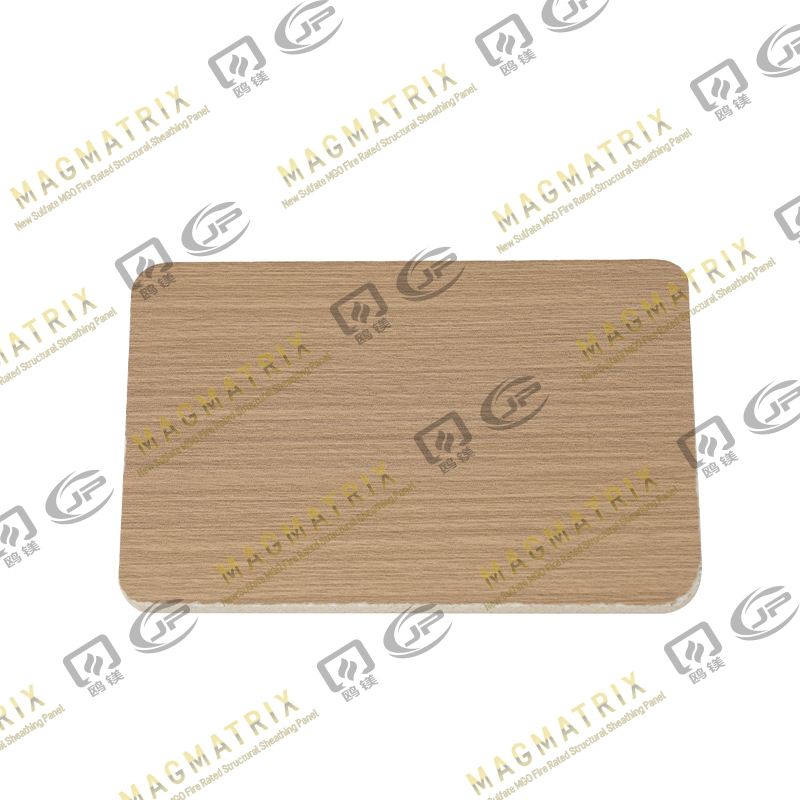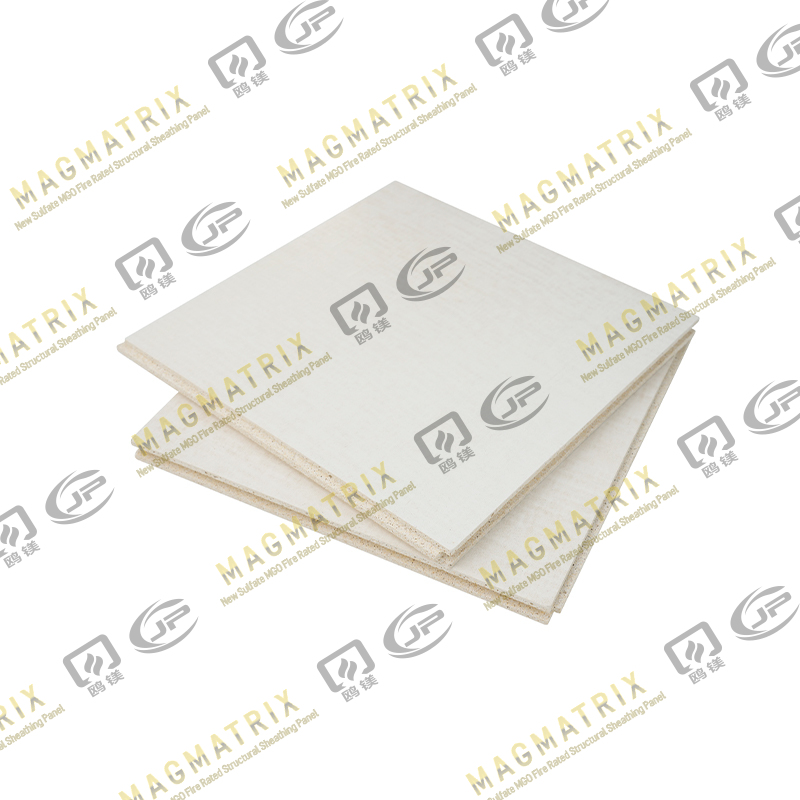
MgO board ranks among today's most fire-resistant building materials. It achieves fire ratings up to 4 hours and withstands temperatures reaching 1200°C. The differences between MgO board and plywood become clear in moisture�prone areas. Plywood absorbs moisture and breaks down over time, while MgO boards stay strong against water damage.
MgO board's effectiveness comes from its non-combustible materials that keep their strength even in very humid conditions. The board's resistance to moisture makes it great at preventing mold and mildew growth, particularly in bathrooms and kitchens. Though MgO boards cost more upfront than plywood, they last longer and need less maintenance, which saves money over time. Builders focused on sustainability will appreciate that MgO boards create fewer carbon emissions during production than plywood's energy-heavy manufacturing process.
This detailed comparison will show you how these materials stack up against each other in moisture tests and ground applications. This information will help you pick the right material that fits your needs.
What is MgO Board and How It Compares to Plywood
MgO boards are a modern alternative to traditional building materials. They combine strength with impressive resistance properties. The way these boards are made and what goes into them creates a material that solves many problems found in regular construction panels.
Definition and Composition of MgO Board
MgO board, short for magnesium oxide board, has a specific mix of natural and synthetic components. The material has about 50% magnesium oxide, 40% magnesium sulfate, and 10% other fillers like perlite, wood fiber, and fiberglass mesh that add stability. Heat and pressure turn this mixture into a stone-like substance that makes an incredibly strong building material.
A typical MgO board has five different layers. The surface is smooth enough to paint, and the outer layer is rough - perfect for plaster or adhesive. A fiberglass mesh sits between these outer sections to make it stronger. The core contains magnesia cement mixed with fillers such as wood and perlite.
MgO board gets its amazing strength from strong bonds between magnesium and oxygen atoms that create magnesium oxide crystals. These boards don't have paper facing, so they resist many types of damage that affect other materials.The manufacturing process doesn't use any volatile organic compounds or toxic ingredients.
Overview of Plywood as a Traditional Material
Plywood is a 70-year old construction material staple. It has multiple thin sheets of wood veneer called plies that bond together under heat and pressure with strong adhesives. Manufacturers place each layer's grain perpendicular to the ones next to it. This cross-lamination makes the material much stronger.
The most common size is 4 feet × 8 feet, with ½-inch being the standard thickness. Cross-graining stops the wood from splitting naturally and reduces shrinking and expanding. This helps plywood stay the same size even when temperature and humidity change.
Better quality wood goes into the outer veneers compared to the core layers. The inner plies work to separate the outer layers more. This smart design helps resist bending forces. That's why plywood has such a good strength-to-weight ratio, making it great for everything from subflooring to furniture.
Key Differences in Material Properties
These materials have several important differences that affect how well they work in construction. MgO boards can resist fire for up to 4 hours, while plywood only lasts 1 hour at most. MgO board stays strong at very high temperatures because fire turns its binder into metallic magnesium oxide, which melts at 2800ºC.
MgO boards handle moisture better too. Plywood soaks up water and can split, come apart, or warp. MgO boards keep their shape even in really humid places. This makes them great for bathrooms, kitchens, and outdoor use.
The environment benefits from MgO board production with 73% lower net carbon emissions than Portland cement. These boards also absorb carbon dioxide as they cure, making them even better for the environment than energy�hungry plywood manufacturing.
MgO boards cost more upfront than plywood. The long-term value is better though, since you won't need to replace them as often. Plywood is easier to handle and install. It remains a cheaper option for places where you don't need much moisture or fire protection.
Moisture Absorption Rates: MgO vs Plywood
Building materials show their true nature when they come in contact with moisture. MgO board and plywood behave differently in wet conditions, which leads to major differences in how long they last and what maintenance they need.
Water Absorption Test Results
Lab tests prove that MgO boards and plywood react differently to water exposure. MgO boards absorb water at rates of 4-11% in environments with 75% relative humidity. Standard plywood absorbs moisture easily, which causes the material to deteriorate over time.
The way MgO boards handle moisture depends on their composition. Boards made with magnesium sulfate as a binder resist water better than those using magnesium chloride. This happens because magnesium sulfate attracts less moisture than magnesium chloride, which reduces moisture-related problems.
MgO board shows remarkable stability in tough wetting-drying cycle tests. After 25 cycles, MgO panels barely change in flexural strength. This is a big deal as it means that OSB loses 40% of its strength, plywood drops by 9%, and gypsum deteriorates by 36-52%. These numbers show how much better MgO performs when repeatedly exposed to moisture.
Swelling and Warping Under Humidity
Building materials' dimensional stability affects their structural integrity and looks. MgO board's response to humidity matters greatly in construction projects. MgO boards keep their shape and structural stability, unlike plywood which swells, warps, and comes apart in excessive moisture.
MgO boards stay stable because of magnesium oxide's properties. These mineral-based, cementitious boards maintain their dimensions when exposed to moisture. Plywood breaks down because its organic wood layers use adhesives that fail in persistent moisture.
Real-life implications are clear:
- MgO boards: Stay structurally stable when slightly bent and fight off warping, swelling, or delamination during brief moisture exposure
- Plywood: Changes shape, forms cups, and might fail structurally in similar conditions
MgO boards provide better dimensional stability as humidity changes, which means less maintenance and a longer life span.
Performance in High-Humidity Environments
Building materials face their toughest test in challenging, high-moisture areas. Bathrooms, kitchens, and other moisture-prone spaces make the differences between these materials clear. MgO boards work great in these environments because their inorganic composition stops mold and mildew from growing.
Standard plywood gives fungi a place to grow when moisture appears. This becomes crucial in bathrooms where constant humidity creates perfect conditions for microbes to thrive.
MgO board's price pays for itself through lower maintenance costs in humid climates. These boards need fewer replacements and repairs in moisture-rich environments, even though they cost more upfront than traditional plywood. Buildings in humid conditions end up costing less over time.
MgO boards offer another advantage with their vapor permeability. They can store moisture while allowing vapor to pass through in both directions. They handle water vapor transfer better than wood-based products, which helps control humidity inside structures without damaging the board.
MgO boards keep their structural stability without delaminating, warping, or swelling in exterior applications or areas that get occasional water exposure. Manufacturers still advise against long direct water exposure to get the best performance.
Mold and Mildew Resistance in Damp Conditions
Mold runs on dampness, which makes your choice of building materials vital in moisture-prone areas. MgO board and plywood create completely different environments that affect fungal growth. These differences directly affect structural strength and the air you breathe indoors.
Organic vs Inorganic Composition
The materials' makeup determines how likely they are to grow mold. MgO board contains mostly inorganic minerals that mold can't colonize. This gives MgO boards a clear edge over organic options like plywood.
Mold needs organic material to grow and multiply. Plywood contains cellulose and lignin that feed fungi, while MgO board's inorganic makeup provides zero nutrition for microbial growth. This explains why MgO board stays mold�resistant throughout its life without needing chemical treatments.
Lab tests back this up. The ASTM G21 standard test for fungal resistance shows MgO sheathing scores a perfect 0/0/0 rating. This means MgO board gives mold nowhere to grow, whatever the moisture levels.
A microscope reveals stark differences:
- MgO Board: Has no organic compounds that feed mildew or fungus
- Plywood: Contains cellulose and other organic compounds that mold feeds on
- MgO Board: Takes in only 0.34% moisture, making it hostile to mold
- Plywood: Draws in more moisture, which leads to more microbial activity
Mold creates several dangerous byproducts. Some fungi release enzymes that break down structural components. Other molds produce organic acids that speed up material breakdown through corrosion. MgO board's inorganic makeup blocks these breakdown paths completely.
Fungal Growth Resistance in Bathrooms and Kitchens
Bathrooms, kitchens, saunas, and basements face tough challenges from constant moisture. MgO board's antimicrobial properties stop mold, mildew, and other fungi from setting up shop. This makes magnesium oxide boards perfect for bathroom walls, saunas, pool areas, and basements where moisture is a constant worry.
Health risks make mold-resistant materials even more important. Mold releases spores and mycotoxins that can trigger allergies, breathing problems, headaches, and skin irritation. People with weak immune systems face even bigger risks from mold exposure. Picking mold-resistant materials becomes vital for health, not just structure.
The real-world difference in humid spaces is clear. Plywood gets weaker with constant moisture, creating perfect conditions for mold. MgO board keeps its strength even in high humidity. This advantage outweighs the higher upfront cost of mgo board.
MgO board helps create healthier homes, especially if you have allergies or asthma, because it completely resists mold, mildew, fungus, and allergens. This leads to better indoor air quality and fewer breathing problems for sensitive people.
MgO board's natural fungal resistance means you won't need regular antimicrobial treatments or early replacement due to mold damage. You'll spend less on maintenance and worry less about health issues throughout your building's life.
Structural Integrity After Water Exposure
Building materials face their toughest test when structural performance meets moisture exposure. The strength and integrity of materials after getting wet directly affects safety, longevity, and maintenance costs of construction projects.
Load-Bearing Capacity Post-Moisture Exposure
MgO boards and plywood show clear differences in their load-bearing capacity after moisture exposure. Tests show that MgO board keeps almost all its flexural strength after 25 cycles of water immersion and drying. Plywood loses 9% of its bending strength. The numbers are even more striking when compared to other materials. OSB loses 40% of its strength, while gypsum panels drop between 36% and 52% under similar conditions.
MgO board performs better because of its core properties. As a cementitious material with a dense, cohesive matrix, it creates a solid structural base even after repeated wetting. Half-inch MgO panels can hold single fasteners supporting more than 350 pounds per square foot in shear force. They also keep withdrawal strength above 150 pounds.
MgO board that's 3/4" thick shows great weight-bearing capacity for flooring. This makes it perfect for standard 24-inch joist spacing. The board keeps this strength even in humid environments. Plywood needs closer joist spacing to make up for strength loss from moisture.
New research shows that properly made MgO boards stay stable even after long exposure to high moisture. Lab tests running for 840 days proved that some MgO board formulations kept their structural integrity without showing moisture on the surface.
Impact Strength Retention in Wet Conditions
Impact resistance is another key factor for construction materials exposed to moisture. MgO board beats traditional materials like plywood here too. Its dense matrix resists impacts, abrasion, and scratching better than conventional materials.
MgO board's strength in high-traffic areas with moisture comes from its unique makeup. The material stays strong even when wet. Plywood can turn brittle or soft depending on moisture levels, but MgO board's impact strength remains consistent. This makes it great for:
- Bathrooms and kitchens where impacts occur in moisture-rich environments
- Commercial spaces with high foot traffic and occasional spills
- Exterior walls subject to weather exposure and physical contact
The long-term benefits justify MgO board's higher price tag in many cases. Plywood costs less upfront but needs earlier replacement in humid areas. Plus, termites can damage plywood, but they can't touch inorganic MgO boards.
MgO sheathing protects against both moisture and physical impacts in exterior uses. Quality MgO board stays intact even in harsh, damp conditions. It won't decay, swell, or curl like wood-based products. This strength helps in fire emergencies too, where sprinklers or firefighting might add water damage to fire exposure.
MgO board's structural performance after getting wet stands out as one of its best features compared to plywood andother building materials. It keeps its strength, stays the same size, and resists impacts even after multiple soakings.These qualities make it perfect for building in areas prone to moisture.
Thermal and Dimensional Stability in Humid Climates
Construction materials in regions with variable climates constantly expand and contract. Building panels' dimensional stability affects their durability, looks, and maintenance needs throughout their life.
Expansion and Contraction Rates
MgO boards and plywood react very differently to humidity changes. MgO boards show excellent stability when exposed to moisture and keep their structural integrity without major deformation. Quality MgO boards can withstand exposure to weather for months before cladding installation.
MgO boards experience minimal hydrothermal movement. Tests reveal these panels shrink slightly as they cure and dry to normal humidity levels. This movement remains manageable compared to plywood's dramatic dimensional shifts. Manufacturers suggest letting MgO boards adapt to their installation environment for 3-5 days before mounting them permanently.
Chemical makeup substantially affects stability performance. Magnesium sulfate-based (MOS) MgO boards absorb 37% less moisture than magnesium chloride-based (MOC) versions at 95% relative humidity. This becomes a vital factor in maintaining stability because MOS boards stay visibly dry during testing while MOC boards might develop moisture droplets under similar conditions.
Resistance to Warping and Cracking
MgO board beats wood-based alternatives in deformation resistance. Plywood tends to swell, warp, and deteriorate when exposed to water. MgO sheathing stays stable under the same conditions. This stability explains why high-quality MgO panels keep their structural integrity even after heavy moisture exposure.
Micro-cracking can be an issue with any panel material used indoors. MgO installations might develop micro-cracks from structural movement, settling, wind forces, seismic activity, or environmental changes. MgO board performs better than plywood in these conditions if installed correctly.
Contractors can reduce cracking in MgO installations by:
- Running HVAC systems for at least 72 hours before board adaptation
- Keeping indoor humidity within 20% of installation conditions
- Creating small gaps between boards for minimal expansion
- Using non-shrinking or elastic caulking at joints
- Applying primer coats that prevent moisture absorption
This exceptional stability makes MgO board popular in moisture-prone areas despite its higher original cost. MgO board's natural properties protect against deformation, while plywood needs special treatments for moderate moisture resistance.
Standard plywood buckles, warps, and might lose structural integrity in humid environments. MgO board maintains its dimensional characteristics and preserves both function and appearance.
Installation and Handling in Moisture-Prone Areas
Building materials in high-moisture zones need careful installation planning. MgO board's handling characteristics can affect project timelines, labor costs, and long-term performance by a lot.
Ease of Cutting and Fastening
MgO board gives installers many options to make adjustments on-site. The board's thickness and precision needs determine the best cutting method:
- Score and snap using utility knives for thinner boards
- Cut with carbide-tipped circular saws for cleaner edges
- Use jigsaws for irregular cuts and openings
- Drill with standard bits to attach fixtures
Supporting both ends of the board stops unwanted breakage. The material needs corrosion-resistant fasteners placed 200-250mm apart, starting from the center outward. Leaving a 6mm gap from walls during installation allows optimal expansion. Drywall screws with phosphoric coating work great with MgO boards. Self-boring head screws make installation easier.
Weight and Handling in Wet Environments
MgO board's density comes in at about 1 gram per cubic centimeter. This means a 12mm (½ inch) board weighs roughly 2.2 pounds per square foot. The boards weigh more than gypsum products but less than traditional cement boards. Carrying boards on their sides protects edges and corners - this is a vital handling practice.
MgO boards keep their structural stability without warping or swelling during brief moisture exposure in construction. Quality MgO board handles normal weather conditions throughout construction and can take up to 180 days of exposure.
Tool Compatibility and On-Site Efficiency
In stark comparison to some claims, MgO boards don't need special tools or protective equipment. Anyone familiar with plywood can work with MgO boards using standard construction tools. This makes installation smooth, especially in renovation projects where time matters.
MgO board's dimensional stability creates extra benefits in moisture-prone installations. The board keeps its structural integrity no matter how humidity changes - this is its biggest advantage. The surface readily accepts paint, tile adhesive, and stucco after installation.
MgO board's original price tops plywood, leading to higher material costs initially. The installation labor costs stay similar since regular trades can do the work without special training.
Environmental Impact and Sustainability
Environmental factors now shape construction material choices as much as performance and cost. MgO board and plywood show clear differences in their environmental footprints.
VOC and Formaldehyde Emissions
Quality magnesium oxide MgO boards excel with minimal chemical emissions. Lab tests following ASTM D6007-14 standards show these boards contain zero formaldehyde. This makes a huge difference in indoor air quality since formaldehyde, a respiratory irritant and carcinogen, shows up often in traditional plywood adhesives.
MgO boards offer more advantages beyond formaldehyde levels. Tests using ASTM D5116-10 standards prove these boards have no volatile organic compounds (VOCs), benzene, or other harmful airborne substances. Many plywood products release VOCs from their glue components.
Premium MgO boards don't contain:
- Asbestos materials and crystalline silica
- Toxic binders and heavy metal salts
- Hexavalent chromium and other hazardous substances
Recyclability and Eco-Friendliness
End-of-life environmental effects highlight another key difference. MgO boards can be recycled completely and qualify as "nutritional waste". Leftover material enriches soil when ground up instead of filling landfills forever.
Natural minerals make up most MgO boards. The best products contain about 91% magnesium oxide and magnesium sulfate (Epsom salts). Wood fiber, perlite or vermiculite, and glass fiber mesh form the rest.
Energy Use in Manufacturing
MgO board production needs 25-50% less energy than making calcium hydroxide (slaked lime) or Portland cement. Manufacturers report up to 50% lower CO2 emissions compared to standard building materials.
Transportation creates one environmental challenge. Raw materials for MgO boards mostly come from China. Long�distance shipping increases their total embodied energy. The overall environmental benefits still outweigh plywood, which contributes to deforestation and requires intensive processing.
MgO boards attract eco-conscious builders despite higher upfront costs. Their moisture resistance and environmental advantages make them a smart choice for sustainable construction.
Cost Comparison and Long-Term ROI
Smart financial decisions depend on weighing your original investment against future benefits. The cost relationship between MgO board and plywood goes way beyond the price tag. You need to factor in upkeep costs and possible insurance benefits.
Original Material Costs: MgO Board Price vs Plywood
These materials show a big difference in upfront costs. Magnesium oxide MgO board costs between $1.50 to $3.50 per square foot. Standard plywood runs from $0.50 to $1.00 per square foot. MgO board's higher price comes from its advanced materials - magnesium oxide, perlite, and fiberglass mesh.
Plywood stays budget-friendly thanks to its lower production costs. Its layered wood veneer structure costs less to make. The simple transport and installation process helps cut project costs even more.
Maintenance and Replacement Costs
MgO board needs more money upfront but saves you plenty over time through its amazing durability. You rarely need to replace MgO boards because they resist environmental damage so well. Plywood needs repairs and replacement faster, especially in damp areas.
MgO board clearly wins in:
- Humid spaces where plywood breaks down faster
- Areas that must prevent mold
- Places with fire safety rules
- Spots needing reliable structural strength
What makes MgO board worth the money in the long run? You won't need many repairs, which makes it a smart choice for budget-focused projects despite its higher price tag.
Insurance and Fire/Moisture Safety Premiums
Insurance benefits often get overlooked. MgO board installations might lower your insurance costs by providing budget�friendly fire-rated wall assemblies with NFPA 285 approved setups. Buildings using MgO boards could qualify for fire insurance discounts, making them more cost-effective.
Multifamily developers find great value in using MgO panels for walls, floors, and subfloors where fire ratings matter. The math adds up: MgO board pays for itself through less maintenance, lower utility costs from better insulation, and possible insurance savings.
Plywood works fine for short-term or low-budget projects. However, MgO board delivers better value over time for projects that need durability and minimal upkeep.
Comparison Table
| Characteristic |
MgO Board |
Plywood |
| Composition |
50% magnesium oxide, 40% magnesium sulfate, 10% fillers (perlite, wood fiber, fiberglass mesh) |
Multiple thin sheets of wood veneer (plies) bonded with adhesives |
| Water Absorption Rate |
4-11% at 75% relative humidity |
High absorption rate (exact % not specified) |
| Fire Resistance |
Up to 4 hours, withstands 1200°C |
Maximum 1 hour |
| Mold Resistance |
Complete resistance (0/0/0 ASTM G21 rating) |
Susceptible to mold growth |
| Strength After Moisture |
Maintains nearly all flexural strength after 25 wet-dry cycles |
9% reduction in strength after 25 wet�dry cycles |
| VOC Emissions |
Zero formaldehyde and VOCs |
Contains VOCs from adhesives |
| Original Cost |
$1.50-$3.50 per square foot |
$0.50-$1.00 per square foot |
| Environmental Effect |
Fully recyclable, 73% lower carbon emissions than Portland cement |
Energy-intensive production, contributes to deforestation |
| Dimensional Stability |
Maintains stability in humid conditions |
Prone to swelling, warping, and delamination |
| Installation Requirements |
Standard construction tools, requires 3-5 days acclimation |
Standard construction tools, no acclimation period mentioned |
| Weather Exposure Rating |
Up to 180 days exposure during construction |
Limited exposure tolerance |
| Maintenance Needs |
Minimal maintenance required |
Regular maintenance needed, especially in humid conditions |
Conclusion
A complete comparison between MgO board and plywood shows a clear winner for moisture-prone applications. MgO board beats plywood in almost all moisture-related tests. Without doubt, MgO boards keep their structural integrity after water exposure and resist mold growth. They show better dimensional stability in humid environments too. Their inorganic makeup creates a hostile environment for fungi. These boards also provide exceptional fire resistance up to four hours—four times better than plywood's maximum rating.
The MgO board's price tag might be higher at first, but the long-term benefits are worth every penny. You'll spend less on maintenance and enjoy a longer lifespan. Insurance advantages can offset the upfront costs, especially in bathrooms, kitchens, and exterior areas. On top of that, these boards help the environment. They create fewer carbon emissions during manufacturing and you can recycle them fully after use.
Plywood works well for budget-friendly projects where moisture isn't a big concern. All the same, MgO board proves to be the better choice when durability, safety, and long-term performance matter most. These magnesium oxide boards need fewer replacements and less maintenance. They also create healthier indoor spaces without mold and VOC emissions.
Your specific project needs will help you choose between these materials. Plywood offers affordable functionality for short-term or low-moisture projects. But spaces that need moisture protection, fire safety, and structural integrity will benefit from MgO board's unmatched performance throughout the building's life. This comparison makes it clear—MgO board wins hands down when moisture resistance counts.
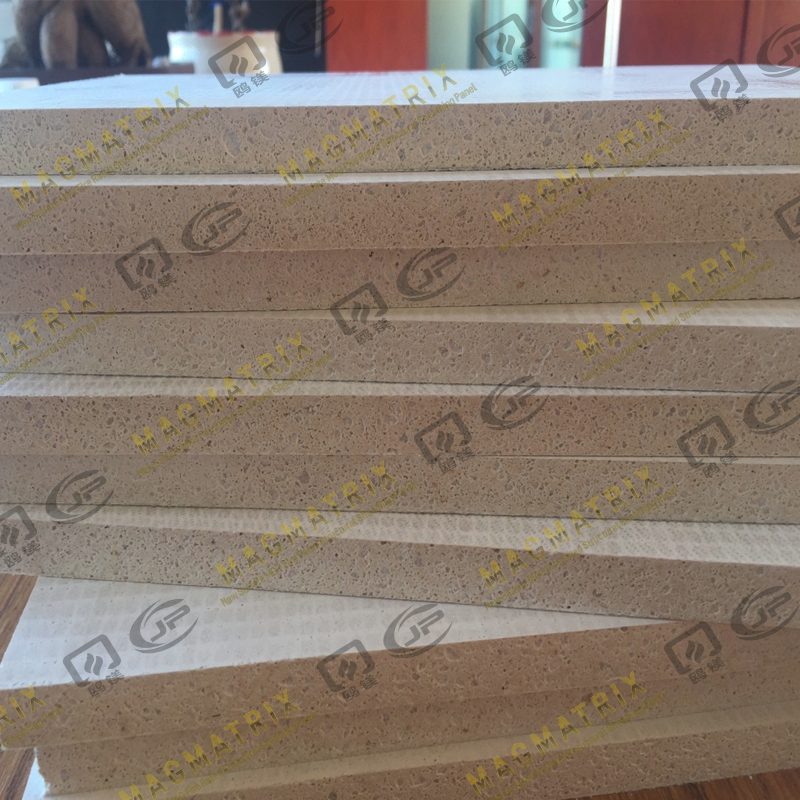 BMSC 517 New Sulfate MgO Board
BMSC 517 New Sulfate MgO Board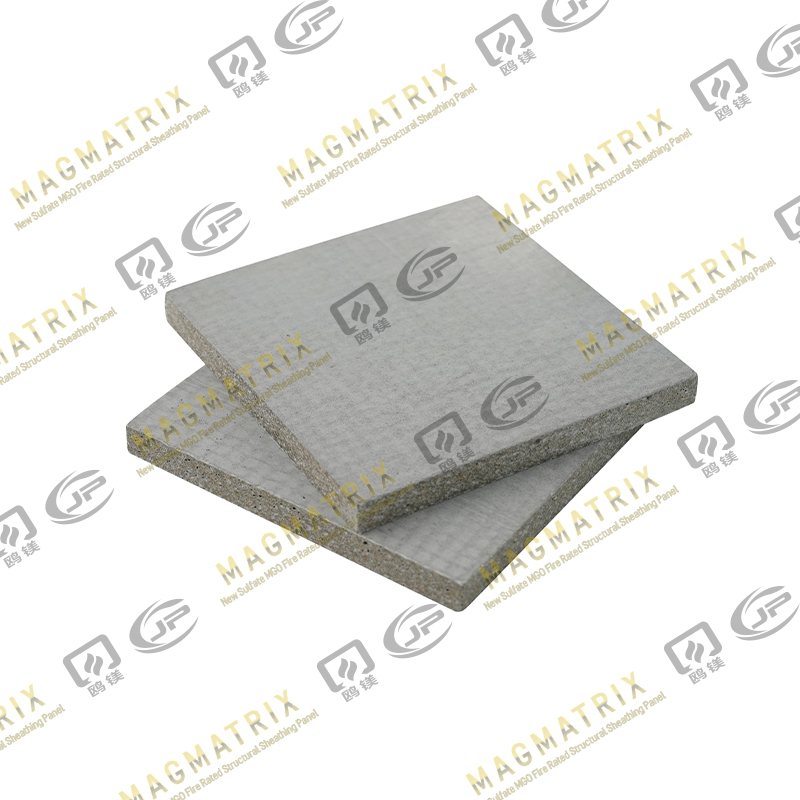 Multi-Support MgO Wall Sheathing Board
Multi-Support MgO Wall Sheathing Board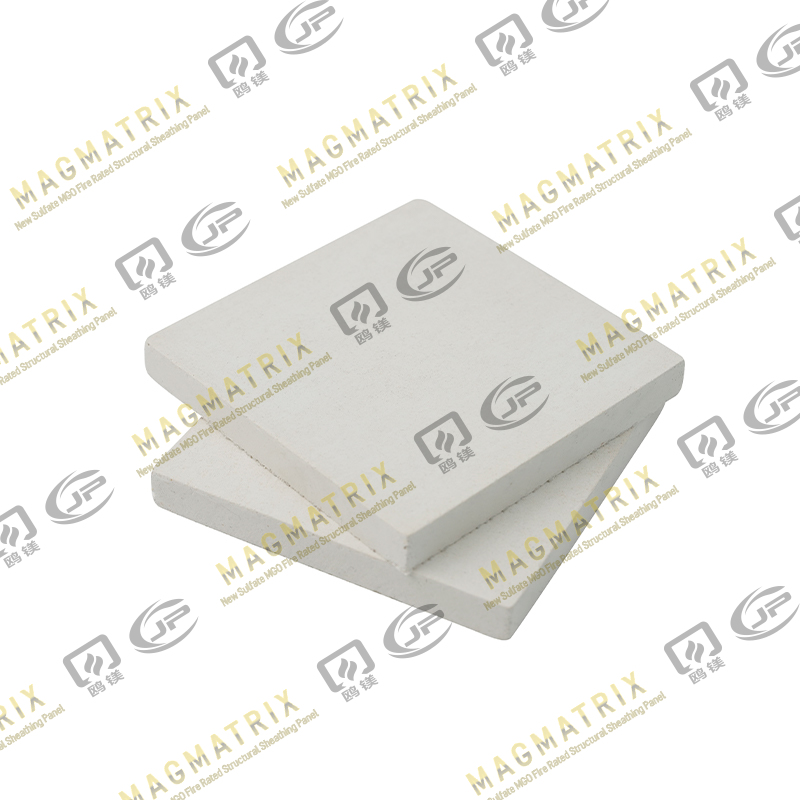 Perseverance MgO Wall Sheathing Board
Perseverance MgO Wall Sheathing Board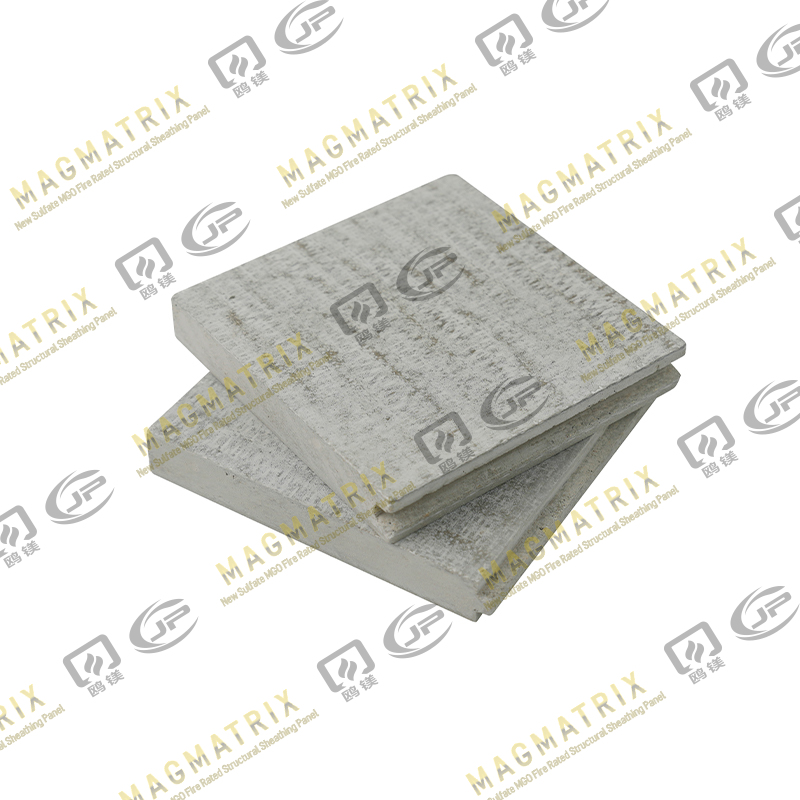 Multi-Support MgO Subfloor Sheathing Board
Multi-Support MgO Subfloor Sheathing Board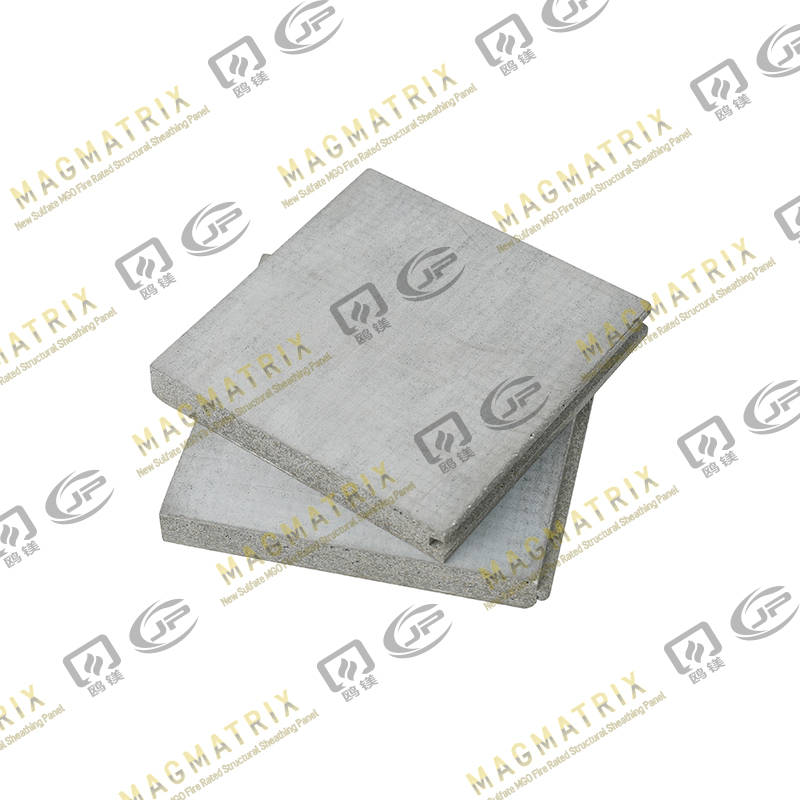 Perseverance MgO Subfloor Sheathing Board
Perseverance MgO Subfloor Sheathing Board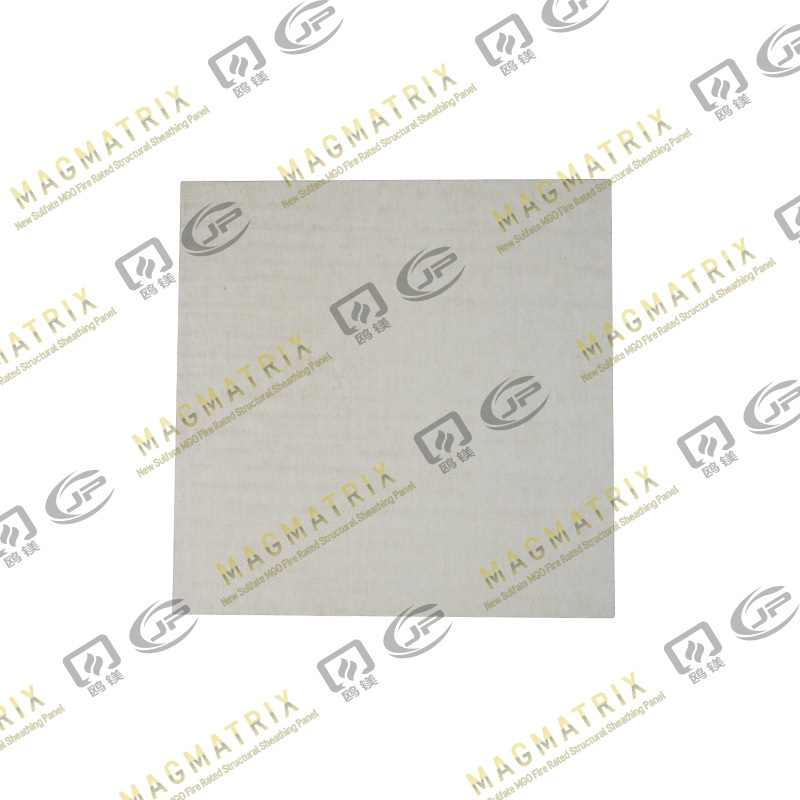 MagMatrix MgO Underlayment Panel/board
MagMatrix MgO Underlayment Panel/board


 English
English русский
русский Español
Español
